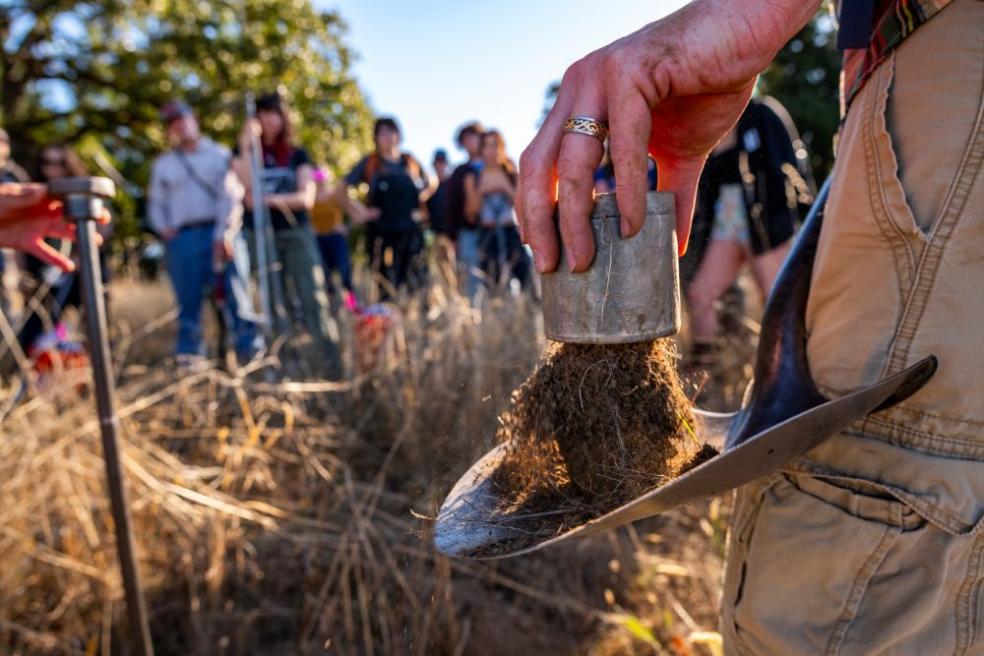
The results show up in résumés, too, as many of Humboldt’s Rangeland Sciences graduates step into jobs after graduation, many with agencies, conservation nonprofits, Tribes, or working lands partners.
The program offers many opportunities for undergraduate students to gain hands-on experience in the field and lab that mirrors real-world jobs. Among these are projects that grew out of the research of Justin Luong, a former Cal Poly Humboldt Rangeland Resource Science professor. His work blends ecology, restoration, and practical management to make science actionable for land stewards.
His projects—spanning grazing management at the Willits Wetland Bypass, regenerative agrivoltaics, and the statewide grassland restoration network (GRASS-Net)—all share a goal of connecting students to hands-on learning that tackles the real challenges of climate change, biodiversity loss, and sustainable land use.
Students aren’t tagging along; they’re leading. At the Willits Wetland Bypass, they study how grazing affects rare plants and fire risk. They record plant diversity, collect soil cores to measure carbon, and assess vegetation moisture that influences wildfire potential. Their work helps determine when and how to use grazing to support threatened species like Baker’s Meadowfoam while maintaining ecosystem balance.
Sophomore Sean Dillon, a Rangeland Resource Science major with a minor in Botany, says that hands-on experience has already changed his career trajectory.
“I knew I wanted to study ecology and natural resources when I graduated high school, but working in Professor Luong’s lab made me switch into Rangeland Science,” Dillon said. “Helping with these projects has inspired me to consider grad school. I’ve learned so much from my peers and from Professor Luong, and I feel very lucky to have found this program.”
Dillon joined the lab in 2024 and has worked on everything from soil and root sampling to data entry and scientific illustration. One of his favorite memories is from a field trip to Willits.
“I'll never forget the field work the lab took to Willits for work related to the Willits Wetland Bypass. I got to see some rare plants, found some cow bones, and listened to music while working in the middle of a big field with the rest of the lab. I spent 20 minutes trying to dig up a plant with a huge taproot,” Dillon said, laughing. “I didn’t even get all of it, but I learned a lot during that trip—and had plenty of laughs with the rest of the lab.”
At other field sites, students explore regenerative agrivoltaics, studying how solar panels can support pollinator habitat, native grasses, and livestock grazing at the same time. They collect soil data, compare shaded and sunny microhabitats, and even install light and temperature sensors to track plant growth conditions.
Back on campus, the GRASS-Net project connects students with land managers, Tribal partners, and restoration professionals across California. Students help build a digital Restoration Toolbox, develop seed-sharing programs, and contribute to quantifying a “lethal drought index” that identifies which native plants can survive the state’s increasingly unpredictable climate.
For students considering Rangeland Sciences, the promise is simple: expect muddy boots, messy datasets, and meaningful results. Whether they’re proving that wildflowers can thrive under solar panels, finding the grazing “sweet spot” that protects rare plants, or helping design climate-ready restoration plans, Humboldt students are shaping how California stewards its working lands.
Learn more about the Rangeland Resource Science program.